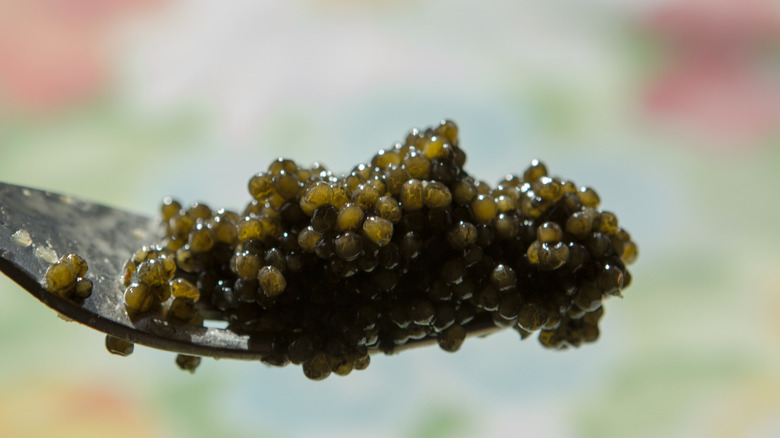What Makes Joël Robuchon's Signature Le Caviar Dish Stand Out
With restaurants across Asia, Europe, and North America, Chef Joël Robuchon's restaurant group has set a standard for fine dining, earning the world's most Michelin stars, and consistently offering exceptional culinary experiences (per JR International). At the L'Atelier de Joël Robuchon in Bangkok, elegant dishes are served on custom-made plates, describes The Great Gastro, and golden cans filled with caviar are placed on top of layers of lobster and king crab, pepper cream sauce, and lobster jelly.
Though caviar served at L'Atelier restaurants has decorated some of Robuchon's most known dishes — like the soft-boiled egg paired with smoked salmon and peppered cream in Shanghai – one dish in particular, notes Eater, represents Robuchon's unrelenting quest for aesthetic and culinary excellence. As Tiny Urban Kitchen wrote of the presentation, "The patience, precision, and pure focus taken to execute this dish perfectly still blows my mind." With one dish, it becomes clear how Robuchon's work could inspire an entire industry.
Plated with perfection
According to Eater, Le Caviar Imperial, a caviar dish served at Joël Robuchon's restaurant in Las Vegas, is plated with fennel cream and crab. The result is literally a taste of the sea, explains Eater, and represents exceptional work in culinary pairing and technique. Not only does the sweetness of the crab contrast expertly with the salty roe, the fennel cream offers an aromatic element reminiscent of fish soups made and served in the south of France.
As explained to Resorts World Sentosa, Le Caviar Imperial is made by filling a plate with a thin coating of Boston lobster jelly. Once the texture of the jelly has cooled and solidified, a circular ring is placed in the center of the dish, and the jelly is scooped out from inside the ring. King crab is laid in its place and topped with caviar from France. Edible gold flakes adorn the piece, and to finish the dish, purée made from cauliflower is meticulously dotted around the plate.
The tiny bead-like patterns are topped with an additional dot of purée made with chlorophyll to create a contrast of colors and textures. These dots of sauce became an identifying feature of Robuchon's most famous dishes, and through the presentation of the Le Caviar Imperial, it's understandable to see how such a display makes a lasting impression, even before the first taste reaches diners' lips.

